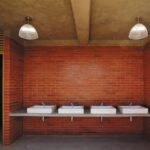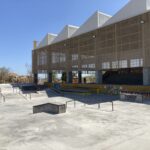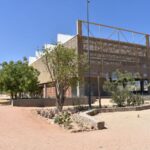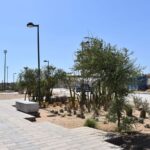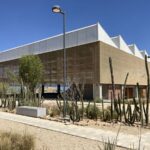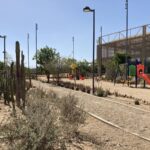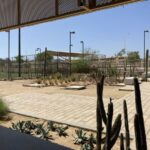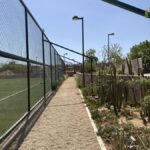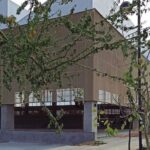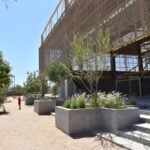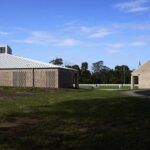In Mexico’s arid landscape, the project “Jardín de Sombras: Public Space as Infrastructure for Cities in the Desert” stands as a testament to innovative urban design and resilience. Led by architects Gabriel Azuara Pellicer, Julián Arroyo, ORU-Oficina de Resiliencia Urbana, and Virens, this endeavor redefines public space to address critical socio-environmental challenges.

Context and Objectives
Located in a marginalized area north of Los Cabos, Baja California Sur, the project emerged from the Urban Improvement Program in collaboration with the Faculty of Architecture of the UNAM. It aims to enhance microclimatic conditions, promote socio-environmental integration, and build resilience against disasters in urban settings.
Design and Features
At its core, Jardín de Sombras comprises a flexible floor plan that accommodates sports fields, restrooms, and a cost-effective kitchenette. The multifunctional space includes amenities like a soccer field, children’s area, and skatepark—all sheltered beneath a unique saw-shaped roof. This design choice serves multiple purposes, from mitigating solar exposure to directing winds for improved microclimate comfort.

Disaster Resilience and Community Engagement
Beyond its recreational offerings, the project doubles as a disaster response hub, providing essential services such as storage, communication facilities, and water storage during crises. Moreover, native vegetation and xerophytic plants enhance biodiversity while offering shade and environmental benefits. Community engagement was central to the project’s success, ensuring that local needs and perspectives were incorporated into the design process.
Sustainable Infrastructure
The saw-shaped roof not only serves as a protective canopy but also integrates sustainable features such as solar panels for renewable energy generation. By harnessing natural resources and maximizing energy efficiency, the project exemplifies a holistic approach to sustainable urban development.

Conclusion: A Model for Desert Urbanism
Jardín de Sombras transcends traditional notions of public space, serving as a beacon of innovation and resilience in desert urban environments. Its blend of functionality, sustainability, and community-centric design sets a precedent for future urban interventions, offering a blueprint for creating inclusive, resilient, and vibrant urban spaces in arid regions.


